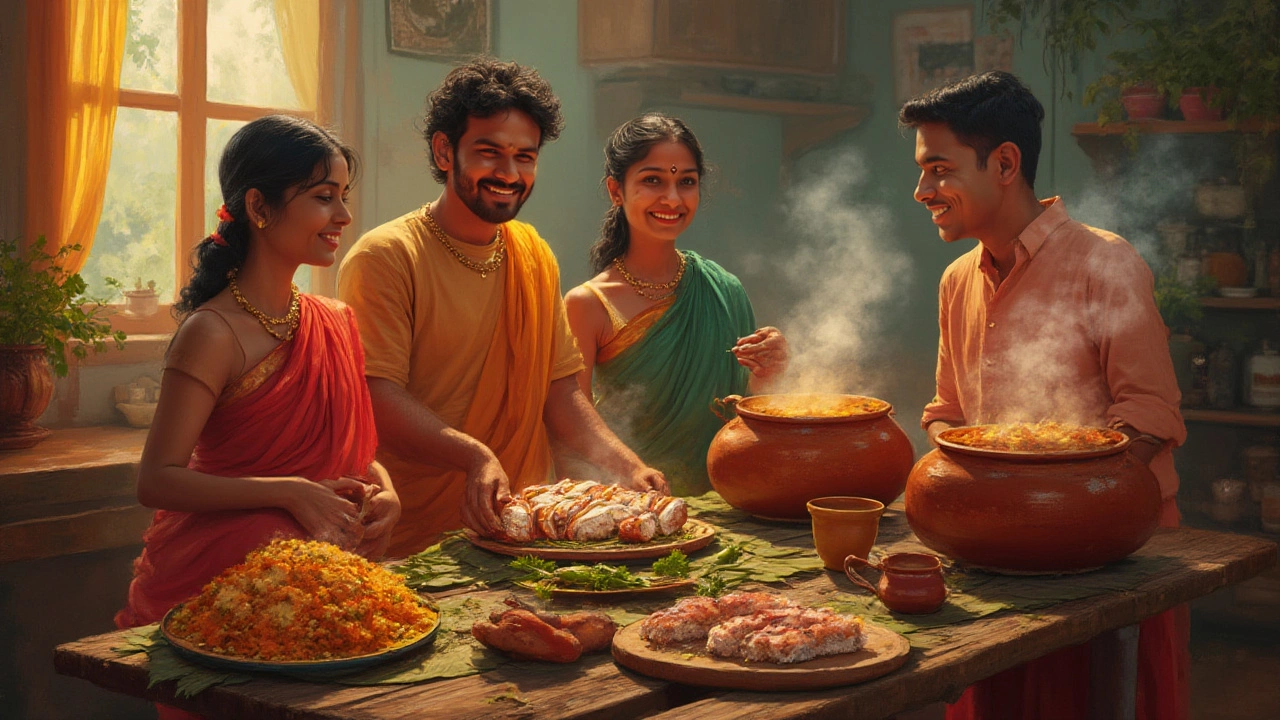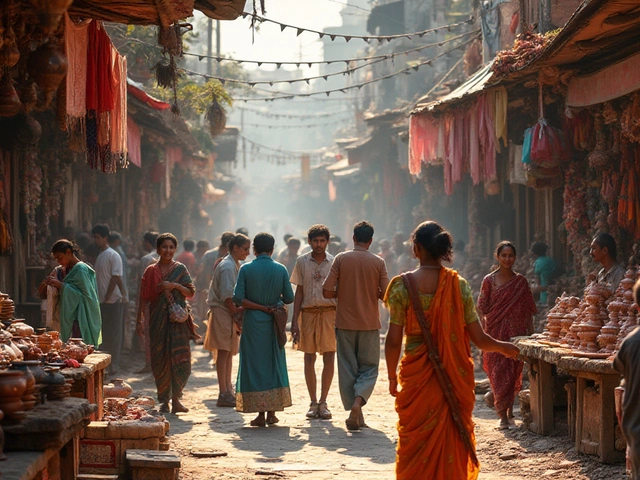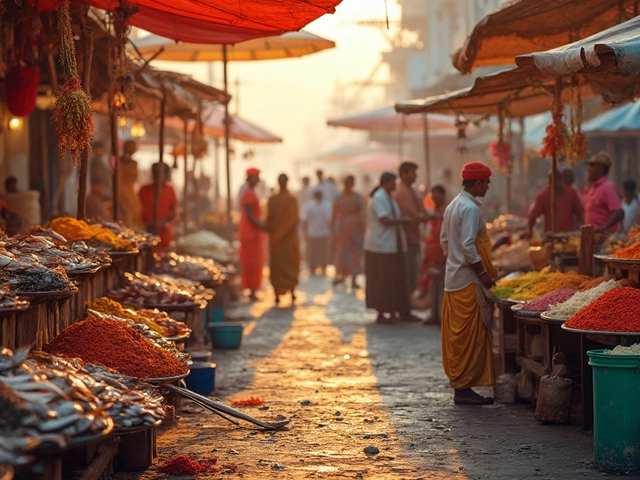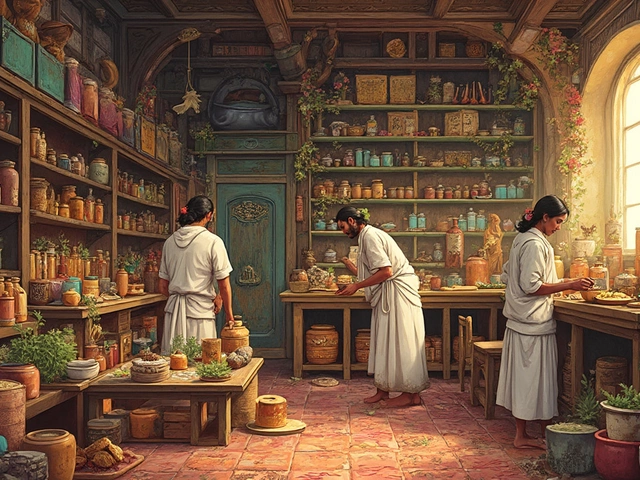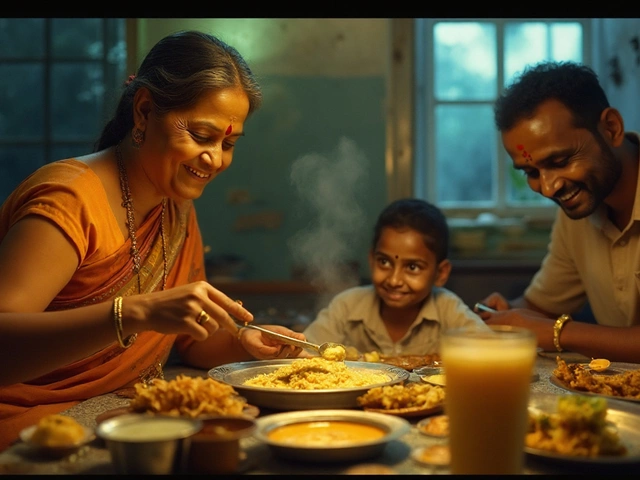If you’ve ever wondered what region in India sets taste buds on fire with sweet, spicy, and tangy food, Bengal’s your answer. This isn’t just a place with a storied past; it’s a region that runs on food. People here will argue about football all day, but put a plate of shorshe ilish or roshogolla in front of them, and the conversation shifts to food memories—how their grandmother made it, how the city smells during Durga Puja, why fresh fish from the bazaar trumps everything.
Bengali Cuisine: Tradition, Innovation, and that Adda Spirit
Bengali cuisine isn't just one thing. It pulls from a tapestry of cultures—Mughal, colonial, local dynasties, and the global sprawl of Kolkata’s ports. There’s a method here that feels ancient. Think mustard oil wafting through kitchens, feisty pops of green chili, and tiny silver branches of coriander on your plate. Fish reigns supreme, but vegetables, daal, and gamey meats jostle for attention. Have you heard of “bhorta”? It’s where the magic of mashing (with mustard oil, chilies, and onion) turns even a humble potato into a dream.
Bengali meals often follow a ritual: starting with something bitter, easing into vegetables, then protein—usually fish or meat—and circles back with daal and bhaja (crispy fries). By the time dessert arrives, your senses have run a marathon. That sweet finish isn’t just tradition; Bengalis are obsessed with sweets. Meals often become community events—think birthday feasts, autumnal celebrations, and winter picnics, where everyone compares whose paturi is better or who has mastered the elusive balance in shukto (a bitter-vegetable medley).
The love for food trickles down to every home. People swap recipes across generations, and competition over who makes the fluffiest luchi is a local sport. Did you know that a survey by The Telegraph India in 2023 found 87% of Bengali households cook fish at least five times a week? That doesn’t even cover the city’s obsession with street snacks. Food isn’t just nutrition—it’s identity, memory, home.
The Fishy Affair: Maachh and Its Thousand Avatars
For a Bengali, “maachh” (fish) is nearly a religion. If you think fish dishes start and end at fish curry, you’re in for a surprise. Bengal’s rivers—Ganges, Padma, Teesta—are packed with freshwater fish. Ilish (hilsa), Rui (rohu), Katla, and Pabda top the charts. Hilsa isn’t just fish here; in 2024, Bengal’s Hilsa harvest was a record 28,000 tons, enough to flood Kolkata’s fish markets and keep nostalgia alive for millions who can recall their first taste as kids.
Let’s get specific. Shorshe Ilish—the poster child of Bengali fish cookery—drowns tender hilsa in a spicy, almost sharp mustard sauce. There’s a trick to it: use fresh, silvery fish, grind the mustard just right, and don’t overcook. Then, there’s Doi Maachh—a yogurt-based fish curry. Cooks pivot from heady spices to mellow, creamy sauces. And nothing beats the comfort of Maacher Jhol: simple, soul-soothing, light yellow broth swimming with flavors of nigella, tomatoes, and potatoes.
Fish isn’t always curried either. Take Paturi—fish fillet, slathered with a paste of mustard and coconut, wrapped in banana leaf and gently steamed. Or Chingri Malai Curry, where plump river prawns get drunk on coconut milk. These dishes are often found at both home feasts and Kolkata’s trendiest restaurants, with many arguing who does it best: grandmothers, or the chefs at legendary eateries like Oh! Calcutta or 6 Ballygunge Place.
Want to enjoy these as a visitor? Head over to the early-morning markets in Kolkata like Gariahat or Maniktala. You’ll see rows of glossy fish, haggling buyers, and that particular fishy aroma that tells you you’re in Bengali territory. If you want to cook, pro tip: get fresh mustard oil and good kasundi (Bengali mustard sauce) to match the signature edge of Bengal’s most-loved fish dishes.
Sweets: The Beating Heart of Bengal
If there’s one thing every Bengali is proud of—maybe even fiercely protective—it’s sweets. No place in India (and maybe the world) does milk-based desserts with the same devotion. Bengal has over 200 distinct sweet treats, according to a study by the Sweetmeats Research Foundation in 2022, and the number keeps growing as home cooks experiment.
You can’t talk about Bengali food without mentioning roshogolla. These are soft, spongy cheese balls, boiled in syrup—white, sometimes blushing pink, always melt-in-mouth. The origin story sparks debates between Bengal and Odisha, but if you ask a Kolkata sweet shop owner, there’s no question who perfected it. Alongside comes sandesh—light, fresh chhena pressed into shapes, sometimes flavored with mango or jaggery during festivals. Nolen gurer sandesh—an aromatic jaggery version—is especially prized in winter, when date palm sap is fresh and golden.
Then there’s mishti doi (sweet yogurt). This humble curd, set in terracotta, gains a soft caramel edge when cooked long and slow. No festival, birthday, wedding or farewell is complete without it. Bengal’s city of Krishnanagar is known for its exquisite intricate sandesh, while Kolkata's Bhim Chandra Nag claims to be one of the oldest running sweet shops since 1826.
Ever tasted chomchom? Or the silky-rubbery texture of malai chamcham from Bardhaman? If you want to take home a bit of Bengal, sweets travel well. Many shops offer vacuum packing, and in 2024, over 12,000 tons of roshogolla were reportedly shipped from Kolkata to customers across India and even to Europe and the USA, thanks to cold-chain innovations.
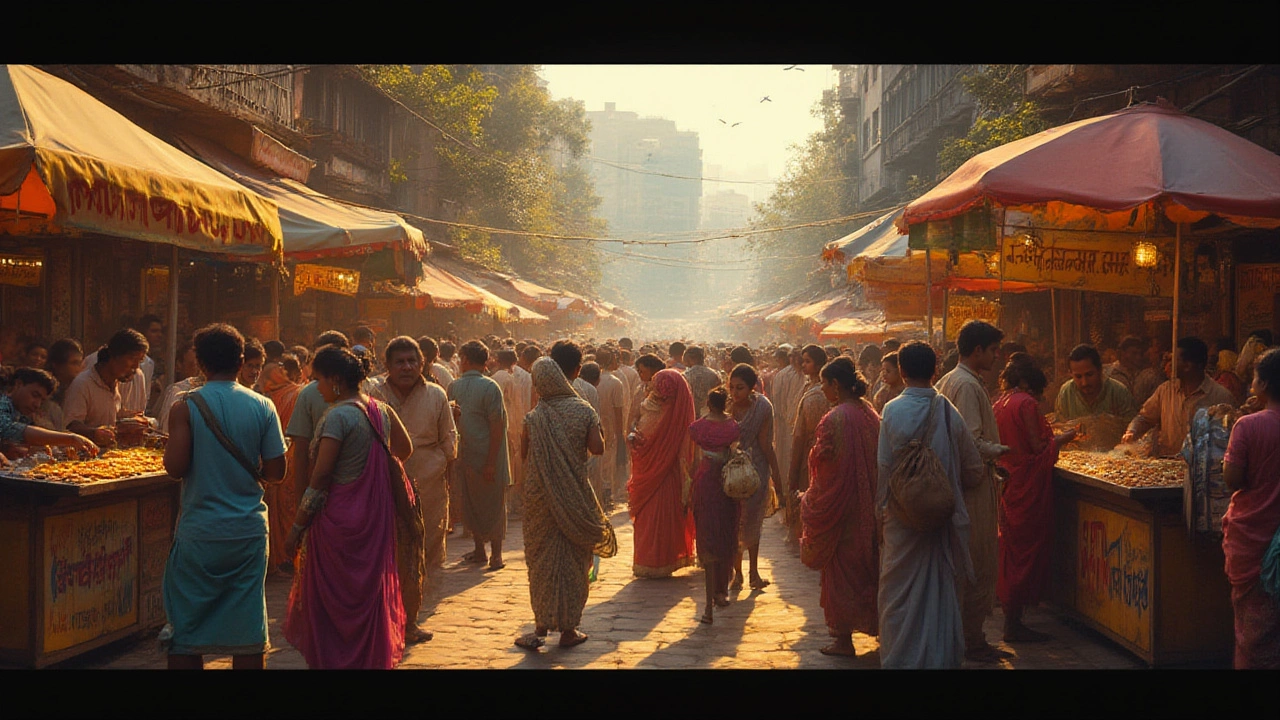
More Than Fish and Sweets: Bengali Vegetarian Delights and Street Food
Think Bengal’s only about fish and sweets? There’s way more to the story. If you’re at a Bengali home during Saraswati Puja or Poila Boishakh, you’ll see a parade of vegetarian dishes. Shukto, that slightly bitter but incredibly gentle stew, with a riot of vegetables and a touch of poppy seed paste, is actually the meal opener. Bhaja (fried stuff) is also a huge deal—beginning with potato, brinjal, or pumpkin, all batter-fried till golden and crisp.
Next, the daals deserve a mention—especially motor daal (yellow split peas), often paired with a deep-fried, puffed bread called “luchi.” If you ever see alur dom (Bengali-style spiced potatoes) and luchi on a breakfast table, you’ll understand why locals are so loyal. Then, there are posto-based dishes, with poppy seeds lending an almost addictive texture and flavor. Aloo posto (potato in poppy seed paste) is legendary. You can even find mochar ghonto, made from banana flowers, spiced and cooked slowly. It’s labor-intensive, but a real treat.
Bengali street food has a cult following. Kolkata is the land of the kathi roll—flatbread wrapped around spicy fillings, a legacy of British-era club kitchens now updated with everything from mutton to egg-and-potato options. Puchka (known as pani puri elsewhere) is stuffed with spiced mashed potatoes and filled with tangy tamarind water that explodes in the mouth. If you’re brave, try jhalmuri—a spicy, crunchy mixture of puffed rice, mustard oil, green chilies, and every crunchy thing in the vendor’s tins. It’s not just a snack; it’s an emotion at railway stations and river ghats.
City life in Kolkata revolves around food stalls. According to a 2024 Kolkata Municipal Corporation report, the city has over 25,000 licensed street food vendors, and street food culture isn’t just alive—it’s thriving and evolving.
Famous Dishes to Try When You Visit Bengal
If your taste buds are tingling by now, here’s a cheat sheet for your food pilgrimage in Bengal. Start with breakfast at an old-school tea stall: grab a couple of luchis, a side of cholar daal (chana dal, spiced with coconut), and a clay cup of chai. Work your way through lunch with kosha mangsho—a rich spiced mutton curry best paired with rice or luchi. Don’t skip the fish, especially shorshe ilish if it’s monsoon. Street food breaks can mean puchka, telebhaja (fried fritters), or a quick egg roll.
Dinner can be fancier: maybe a Daab Chingri (prawn curry in tender coconut, steamed in the coconut itself). Sweets should punctuate your day, not just finish it—treat yourself to roshogolla, sandesh, and mishti doi whenever you spot authentic shops. Your challenge: don’t count calories, count memories.
If you want data, the table below covers the most popular Bengali dishes and where they’re usually eaten. Feel free to make your own list of must-eats based on what catches your eye (and nose):
| Dish Name | Main Ingredient | Best Eaten At |
|---|---|---|
| Bengal food (hilsa fish curry) | Hilsa fish, mustard | Home, riverbank restaurants, 6 Ballygunge Place |
| Sandesh | Chhena, sugar/jaggery | Sweet shops, festival stalls |
| Kosha Mangsho | Mutton, spices | Home, classic Kolkata eateries |
| Shukto | Mixed vegetables, poppy seeds | Home, puja feasts |
| Roshogolla | Chhena, sugar syrup | Sweet shops, markets |
| Puchka | Puffed puri, potato filling | Street vendors, busy markets |
| Chingri Malai Curry | Prawn, coconut milk | Home, sea-facing restaurants |
Remember, every district in Bengal tweaks its recipes. North Bengal’s food has more spice and bamboo shoots, and riverine South Bengal keeps things lighter and fishier. The sweet tooth? That’s universal—everywhere from Malda to Medinipur.
Tips for Exploring Bengali Food: What Not to Miss
If you want your Bengal food journey to hit all the right notes, here’s what to keep in mind. Eat like a local—don’t just stick to hotel buffets. Try the neighborhood sweet shops; every moira (sweet maker) has a secret. Breakfast from a roadside stall is an adventure—watch out for the aromas, the sounds of frying, and the morning rush. If a local invites you to a home-cooked meal, accept immediately. You’ll get flavors, stories, and probably an hour-long lesson on which fish curry is best in which season.
If you’re squeamish about spices, ask for “alpo jhal” (less hot). Bengali food can be fiery, especially when mustard is involved. Don’t ignore the vegetarian items—unlike the stereotypes, Bengal’s “niramish” (vegetarian) fare is creative, unique, and sometimes more complex than the meat dishes. If you’re present during Durga Puja, gawk at the food lines and try whatever’s on the menu. In spring, look out for the bounty of shorshe (mustard) used in everything.
And here’s a quirk: Bengalis take pride in their food debates. Whether it’s about the superiority of Kolkata biryani (with its signature potato chunk) or the legitimacy of chicken in biryani (a crime for some purists), there’s always a food battle brewing. Jump in, listen, taste—there’s no other place where arguments about muri (puffed rice) can become so passionate. And always, always save space for sweets. You’re never done exploring Bengali cuisine until you’ve made yourself just a little bit sick on something sticky, milky, or jaggery-laced.
